Do you have a question about the NOCO Genius G3500 Series and is the answer not in the manual?
Lists the items included with the NOCO Genius G3500 charger.
Describes the NOCO Genius G3500, its capabilities and compatibility.
Advises reading battery manufacturer precautions and determining battery voltage/chemistry.
Details how to mount the charger using external holes and considerations for cable length.
Explains the Standby mode, its energy saving feature, and the indicator LED.
Details the 12V NORM mode for various 12V lead-acid batteries and its indicator LED.
Describes the 12V COLD/AGM mode for cold temperatures and AGM batteries, and its indicator LED.
Covers the 12V NORM [Small] mode for smaller 12V lead-acid batteries and its indicator LED.
Explains the 12V COLD/AGM [Small] mode for smaller batteries in cold conditions and its indicator LED.
Details the 6V NORM mode for 6-volt lead-acid batteries and its indicator LED.
Describes the 12V LITHIUM mode for 12V lithium-ion batteries and its indicator LED.
Explains the 12V REPAIR mode for battery recovery and its indicator LED.
Provides step-by-step instructions for connecting the charger to the battery terminals, emphasizing polarity.
Outlines the steps to verify connections, select modes, and start the charging process.
Explains the 25% Charge LED behavior for less than 25% and at 25% charge.
Explains the 50% Charge LED behavior for less than 50% and at 50% charge.
Explains the 75% Charge LED behavior for less than 75% and at 75% charge.
Explains the 100% Charge LED behavior for less than 100% and at 100% charge.
Details the 100% Charge LED behavior during maintenance charging.
Explains a single flash error condition and its potential cause/solution.
Explains a double flash error condition and its potential cause/solution.
Explains a triple flash error condition and its potential cause/solution.
Explains the solid red Error LED condition, typically reverse polarity.
Explains the solid orange Standby LED condition, typically low battery voltage.
Details the initial analysis and diagnosis of the battery's condition.
Explains the desulfation process for deeply discharged or sulfated batteries.
Details the start of the charging process with a gentle charge.
Explains the bulk charging process, aiming for 80% battery capacity.
Details bringing the charge level to 90% with small current amounts.
Explains finalizing the charge for maximum capacity and performance.
Describes continuous monitoring and initiation of maintenance charge.
Highlights critical dangers like shock, explosion, and fire from product misuse.
Advises eye protection and notes risks from explosive battery gases.
Addresses California's Proposition 65 warning and personal safety measures.
Provides guidance on charger handling, modifications, and approved accessories.
Advises on proper placement of the charger away from the battery and ventilation considerations.
Specifies the recommended operating and storage temperature ranges for the charger.
Provides recommendations for storing the charger in dry, clean locations.
Details compatible battery types (lead-acid, lithium-ion) and warns against others.
Warns about risks associated with charging lithium-ion batteries and consulting manufacturers.
Outlines procedures for cleaning the charger safely, including unplugging it.
Advises obeying signs and instructions in potentially explosive areas.
States the device is not intended for uses where failure could cause severe damage.
Explains compliance with RF emission regulations and potential effects on other electronics.
Details the 5-year warranty period and items not covered by the warranty.
Explains how to claim warranty service and associated fees based on time elapsed.
Emphasizes the need to register the product online to validate the limited warranty.
Lists the items included with the NOCO Genius G3500 charger.
Describes the NOCO Genius G3500, its capabilities and compatibility.
Advises reading battery manufacturer precautions and determining battery voltage/chemistry.
Details how to mount the charger using external holes and considerations for cable length.
Explains the Standby mode, its energy saving feature, and the indicator LED.
Details the 12V NORM mode for various 12V lead-acid batteries and its indicator LED.
Describes the 12V COLD/AGM mode for cold temperatures and AGM batteries, and its indicator LED.
Covers the 12V NORM [Small] mode for smaller 12V lead-acid batteries and its indicator LED.
Explains the 12V COLD/AGM [Small] mode for smaller batteries in cold conditions and its indicator LED.
Details the 6V NORM mode for 6-volt lead-acid batteries and its indicator LED.
Describes the 12V LITHIUM mode for 12V lithium-ion batteries and its indicator LED.
Explains the 12V REPAIR mode for battery recovery and its indicator LED.
Provides step-by-step instructions for connecting the charger to the battery terminals, emphasizing polarity.
Outlines the steps to verify connections, select modes, and start the charging process.
Explains the 25% Charge LED behavior for less than 25% and at 25% charge.
Explains the 50% Charge LED behavior for less than 50% and at 50% charge.
Explains the 75% Charge LED behavior for less than 75% and at 75% charge.
Explains the 100% Charge LED behavior for less than 100% and at 100% charge.
Details the 100% Charge LED behavior during maintenance charging.
Explains a single flash error condition and its potential cause/solution.
Explains a double flash error condition and its potential cause/solution.
Explains a triple flash error condition and its potential cause/solution.
Explains the solid red Error LED condition, typically reverse polarity.
Explains the solid orange Standby LED condition, typically low battery voltage.
Details the initial analysis and diagnosis of the battery's condition.
Explains the desulfation process for deeply discharged or sulfated batteries.
Details the start of the charging process with a gentle charge.
Explains the bulk charging process, aiming for 80% battery capacity.
Details bringing the charge level to 90% with small current amounts.
Explains finalizing the charge for maximum capacity and performance.
Describes continuous monitoring and initiation of maintenance charge.
Highlights critical dangers like shock, explosion, and fire from product misuse.
Advises eye protection and notes risks from explosive battery gases.
Addresses California's Proposition 65 warning and personal safety measures.
Provides guidance on charger handling, modifications, and approved accessories.
Advises on proper placement of the charger away from the battery and ventilation considerations.
Specifies the recommended operating and storage temperature ranges for the charger.
Provides recommendations for storing the charger in dry, clean locations.
Details compatible battery types (lead-acid, lithium-ion) and warns against others.
Warns about risks associated with charging lithium-ion batteries and consulting manufacturers.
Outlines procedures for cleaning the charger safely, including unplugging it.
Advises obeying signs and instructions in potentially explosive areas.
States the device is not intended for uses where failure could cause severe damage.
Explains compliance with RF emission regulations and potential effects on other electronics.
Details the 5-year warranty period and items not covered by the warranty.
Explains how to claim warranty service and associated fees based on time elapsed.
Emphasizes the need to register the product online to validate the limited warranty.
| Type | Smart Battery Charger |
|---|---|
| IP Rating | IP65 |
| Charging Current | 3.5A |
| Battery Capacity | Up to 120Ah |
| Chemistry | Lead-Acid |
| Battery Type | AGM |
| Charging Modes | 12V |
| Safety Features | Overcharge Protection, Short-Circuit Protection, Reverse Polarity Protection |
| Compatibility | Compatible with all 12V lead-acid batteries including AGM, Gel, and Wet |

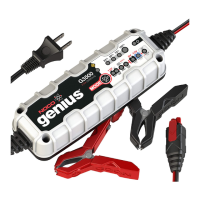
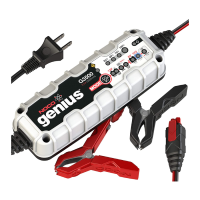
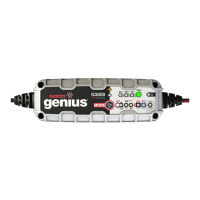

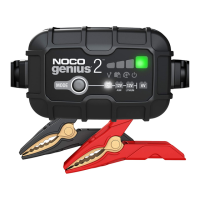
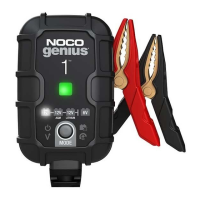
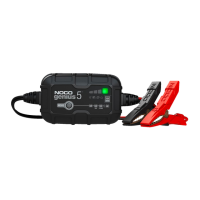
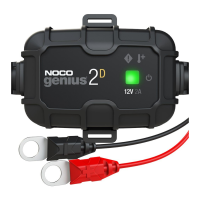
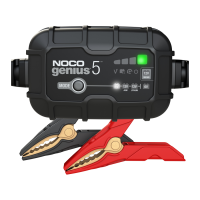
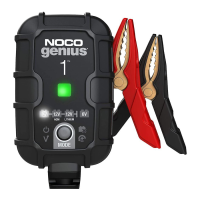
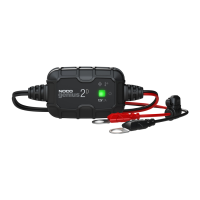
